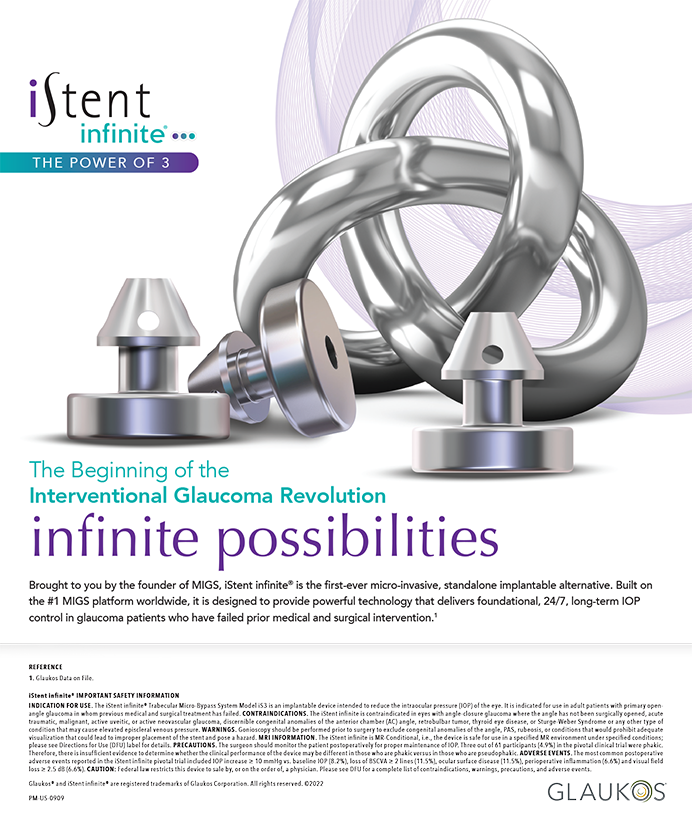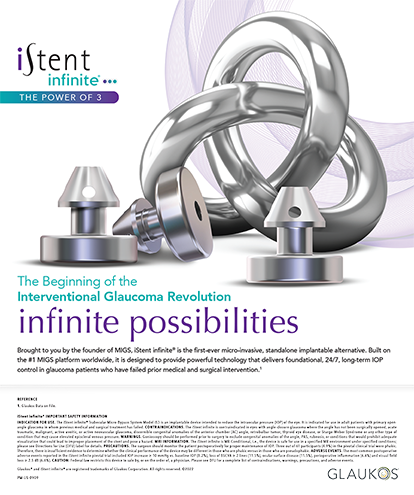Topical antibiotics produce resistant organisms. Susceptible bacteria die upon the instillation of topical drops, whereas resistant organisms remain as a colony around the eye. I use intracameral antibiotics at the time of surgery to increase the safety of the cataract procedure and also to address the issue of bacterial resistance.
MY PROTOCOL
More than 40 years ago, I began administering prophylactic antibiotics in the anterior chamber via infusion fluid during cataract surgery. For the past 35 years, however, I have injected the drugs into the anterior chamber, because this route of administration provides a more controlled dosage than does the infusion solution.
There are several options for intraocular antibiotics. Other surgeons use moxifloxacin or cefuroxime. I use a combination of vancomycin and ceftazidime. I draw up 16.64 mL of BSS (Alcon) and inject it into an empty sterile vial. I then add the drugs at the following concentrations to the 16.64-mL bottle of BSS:
• 5.62 mL dexamethasone 4 mg/mL
• 0.09 mL ceftazidime 50 mg/mL
• 0.15 mL vancomycin 500 mg/10 mL
The protocol described produces a total volume of 22.5 mL. At the end of phacoemulsification, I draw up a dosage of 0.1 mL. I make the eye firm and then decompress it by about 0.1 mL of fluid. At that point, using a 27-gauge cannula placed through the paracentesis port, I inject 0.1 mL of fluid containing the antibiotics into the eye, reforming the anterior chamber. In addition to the injection, the site is prepared with neutralized povidone-iodine (Betadine; Purdue Frederick).
These preparations are quite demanding and require strict controls. I would say that the protocol will be most efficient in a high-volume setting.
IMPLICATIONS
I have found that the combination of the neutralized povidone-iodine solution and the intraocular injection has reduced my incidence of endophthalmitis to a rate well below accepted standards. This success leads me to question whether postoperative topical antibiotics are really necessary or not.
Several colleagues have told me that they have also performed intracameral injections of antibiotics in large series of cataract cases without an incidence of endophthalmitis (personal communications). They include Richard Mackool, MD; Howard Gimbel, MD; Steve Arshinoff, MD; and Samuel Masket, MD.
The foundation for the intracameral approach to prophylaxis is that resistant organisms cannot develop in a totally closed container. Rather, they must be placed inside the closed container (intracamerally) to be effective. In theory, the microbes that could enter the eye during surgery are neutralized by the body's immune system, and any that survive will be addressed by the antibiotic. The half-lives of antibiotics are relatively short, but in our experience, combining these drugs with the body's immune system makes endophthalmitis a very rare event.
Endophthalmitis is difficult to study, because the rate of its occurrence is so low. My colleagues' and my clinical observations, however, suggest that intracameral antibiotics effectively prevent this devastating postoperative complication with little or no adverse reaction. I would like to see the use of intracameral antibiotics become the standard of care in cataract surgery. n
James P. Gills, MD
• founder and director of St. Luke's Cataract & Laser Institute,
Tarpon Springs, Florida
• (727) 938-2020; jgills@stlukeseye.com
• financial disclosure: none acknowledged


